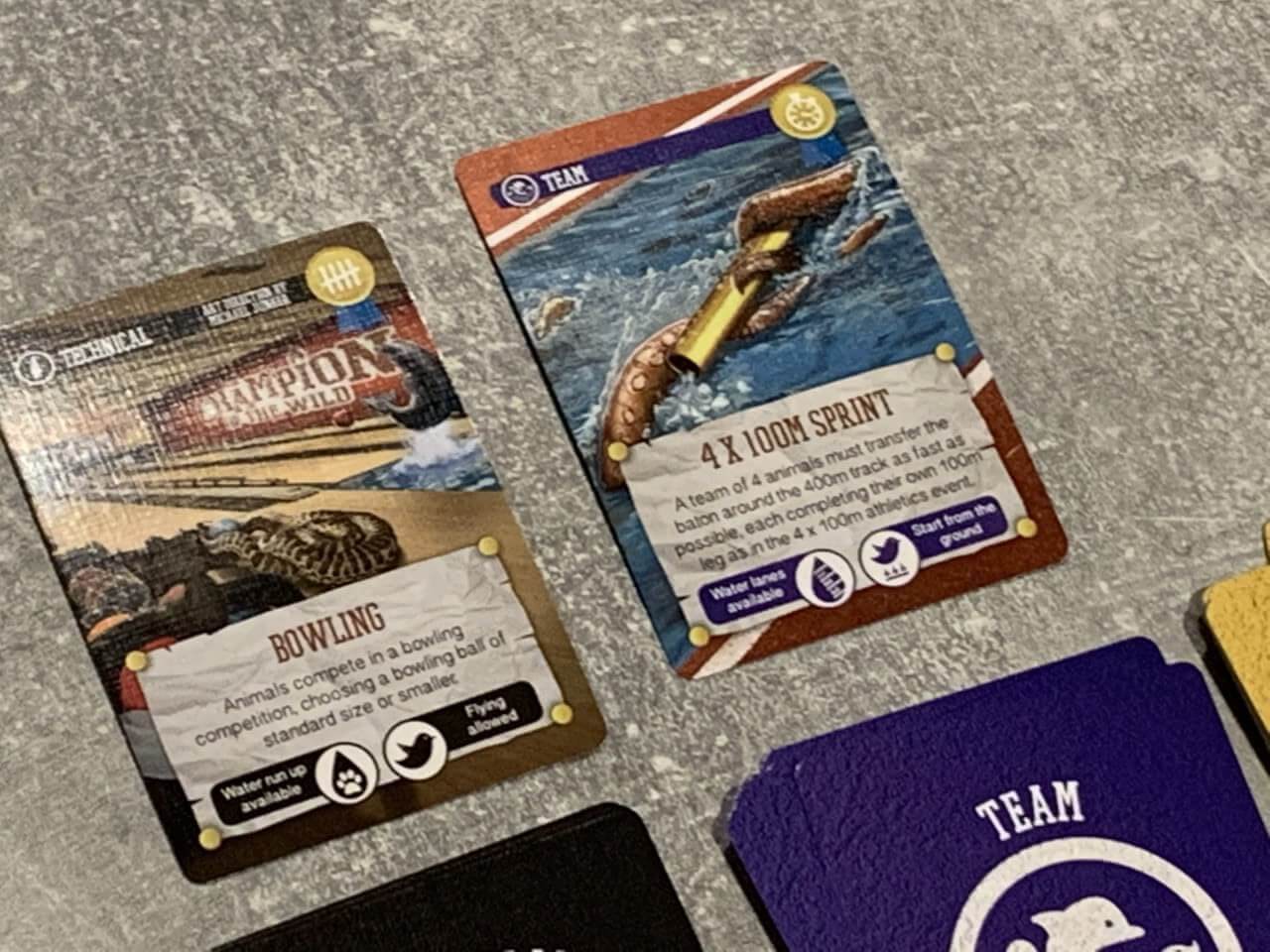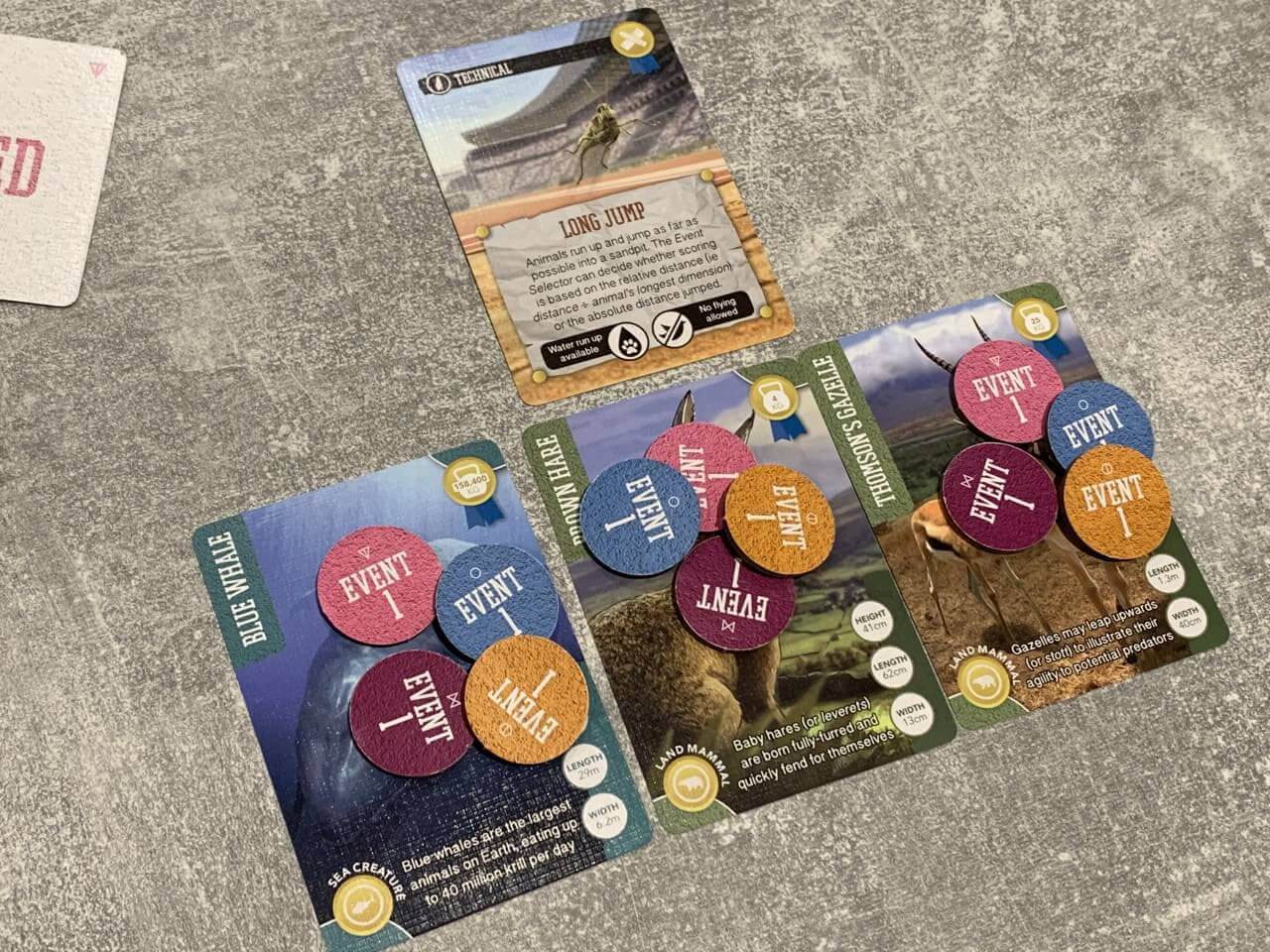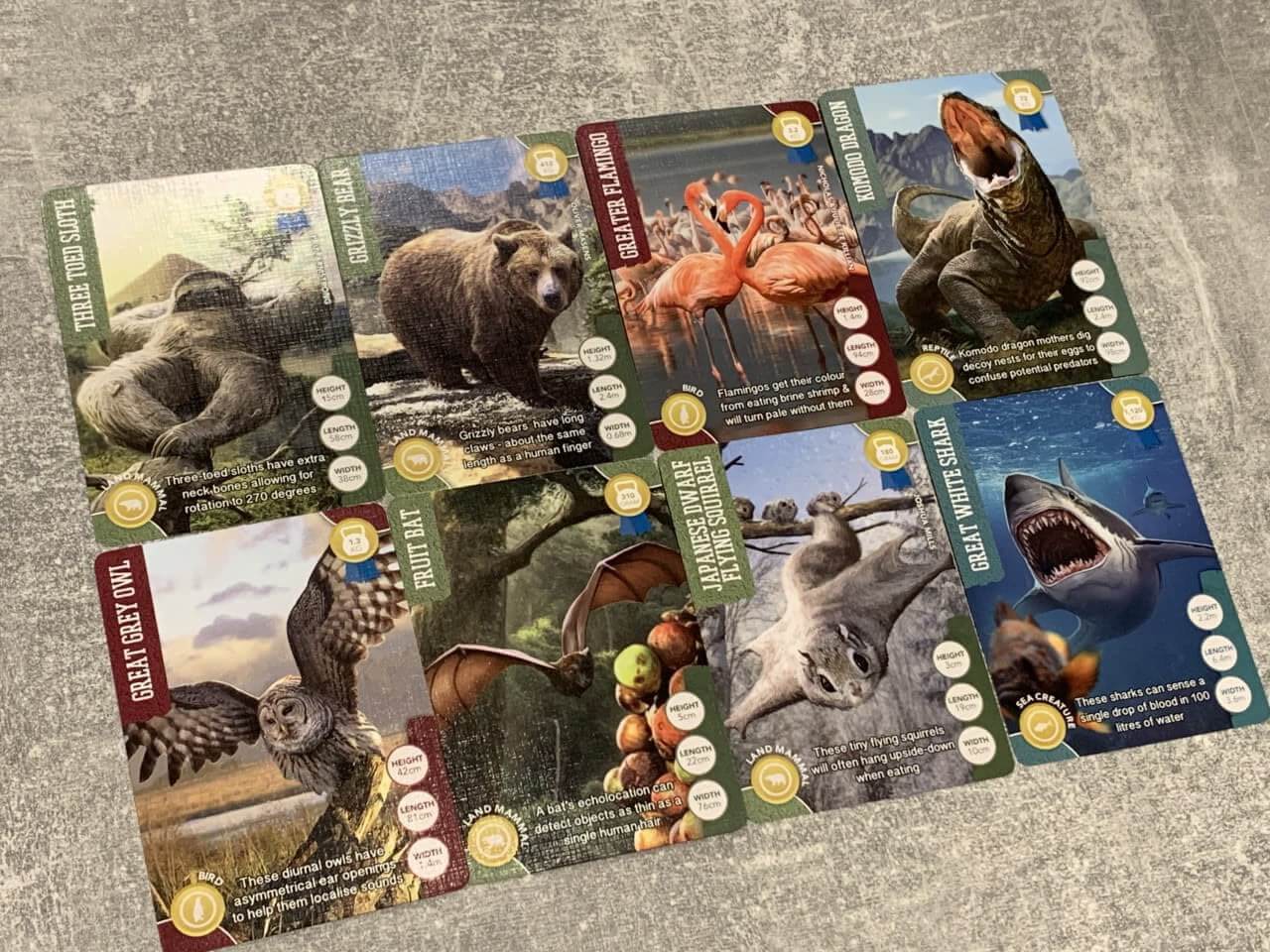The Champion of the Wild asks all the right questions
![]() Now don’t be shy, you can’t tell me that you’ve never wondered who would win in a fight between a tiger and a polar bear, or whether an elephant is a better endurance swimmer than a leopard. It’s OK, we’ve all asked those questions at some point in our lives — but only since The Champion of the Wild have we been able to answer them.
Now don’t be shy, you can’t tell me that you’ve never wondered who would win in a fight between a tiger and a polar bear, or whether an elephant is a better endurance swimmer than a leopard. It’s OK, we’ve all asked those questions at some point in our lives — but only since The Champion of the Wild have we been able to answer them.
The Champion of the Wild is a party game that is almost entirely about negotiation, social manipulation and voting. Whilst that could be a fairly heavy combination of concepts, the subject matter here is what really sets the game apart, injecting much-needed humour and levity into the game to the extent that players almost forget that they are competing at times.

The core concept is simple — the players set up a series of events (the game includes rules for a basic mode, then a range of triathlons, pentathlons and so on) and then either draw or draft a team of animals to compete in them. The draft mode is longer and slightly more complex by nature, but it is also by far the best way to play since the players will need to create a balanced team.
A balanced team for what, you ask? Well, in short, each player is drafting animal cards, which will later be used to compete in a wide variety of events both practical (sprinting or jumping) or slightly more madcap (jousting, tree felling, car crushing, negotiating a maze). How well these animals compete is then entirely up to the imagination of the player that controls them.

To bring this to life a little bit, let’s pretend that we have an orca, a bear, a lion and a seagull engaged in a staring contest. The players will each make a reasoned argument as to why their animal is best — perhaps the seagull enters a zen-like state where it imagines its opponent is a stray chip, and it simply cannot blink or release its gaze whilst in that state.
Perhaps it is claimed that the orca (due to being underwater) doesn’t need to blink — and one mode of the game allows the use of Google to either support or refute this claim. The lion and the bear, of course, both claim that their predatory instincts and large stature enable them to gaze fearlessly at their opponent for as long as needed.

With these arguments made, any counter-arguments heard, and any further final words on the matter, the players will each use voting chips in their colour to secretly score the contestants, assigning a rank from first down to last (with tokens included for up to eight players.) These animals, exhausted as they are, will not participate in any more events during this game.
The winner, as you can probably guess, is the player who has the most points cumulatively across their animals at the end of the game. The end is always determined based on the number of events agreed at the start — so a triathlon would have three events, for example.

Now, I normally deal with components at the end of a review and pay relatively little attention to them unless they are unusually good or bad. In The Champion of the Wild’s case, the components are exceptional, and further to that, integral to the experience.
Both event and animal cards feature photo-realistic painterly style art that depicts the creatures engaging in events, paying particular attention to some of the more bizarre combinations. The game goes to great lengths not only to state that water or air-based animals can (or can’t) but participate in events, but where applicable, it also shows and describes this.

To use another example, the high jump event clearly states that a water lane can be installed, and the picture itself shows what I think is a blue or sperm whale preparing to make the jump. Some people can imagine this sort of thing naturally and easily, but others can’t, and the imagery really, really helps the latter to engage the creative part of their brain and think of their own examples.
With that said, The Champion of the Wild is still a negotiation and social experience, and some players are naturals at bluffing, thinking quickly and outmanoeuvring others. Some players feel quite uncomfortable with the idea of openly arguing about why an alligator is better at opening cans than a beaver.

Social biases (such as best friends among children, or married couples among adults) might also affect voting, but that’s not really the game’s fault. I’d probably also argue that anyone who is “working too hard” to win The Champion of the Wild might have kind of missed the point. For me, this is pure irreverence — it’s a mad, fun, boisterous party game that does what Cards Against Humanity did when it first came out, but it’s clean and wholesome, has much more structure, and is far, far more enjoyable.
To summarise then, The Champion of the Wild makes a compelling argument to become my personal favourite party or social game of the moment. I love the theme, I love the artwork, I personally enjoy negotiation and I honestly cannot wait to play this game with my own children (who are a little too young) in a year or two. For the price of entry, I think The Champion of the Wild is an absolute winner.
You can find The Champion of the Wild on Amazon.
Love board games? Check out our list of the top board games we’ve reviewed.

Comments are closed.